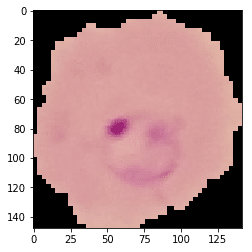Among multiple areas like customer analytics, Finance, Marketing, AI has shown great promise in the Healthcare domain. There has been increasing support towards using AI by both, the industry and academia. In the following blog, we discuss a few areas in which AI has helped the Healthcare industry. As a bonus, for all the techies who like to get their hands dirty, we have included a practical tutorial for you to build your own malaria detection algorithm.
Virtual Assistants
The Healthcare industry is massively investing in intelligent systems in order to make their services more efficient. One such way is by developing Medical Virtual Assistants. The assistants supported by AI, enable smooth and quick interaction not only with patients about frequently asked questions but also with doctors who might want to retrieve medical information or the history of a patient.
According to a study, 49% of a physician’s time is spent doing administrative work. Something that can be largely automated using IT.
Using Machine Learning and Natural Language Processing techniques, it becomes extremely convenient to navigate through medical databases in order to get the desired information.
In addition, these assistants can deliver personalized notes to a patient by analyzing their medical information and history. It is estimated that the virtual assistant market will reach $15.8 B in 2021 from $1.6B in 2015. Nuance, a company founded in 1992 claims that its virtual assistant is helping doctors serve patients better by automating a doctor’s schedule for the day, patient’s problems, his/her summary, and much more.
Drug Design
AI has shown immense potential to help pharmaceutical industries, especially in their Research and Development process, particularly in areas like predicting treatment results, drug design, and data pre-processing. On the research side, algorithms like Convolutional Neural Networks have leveled up the process of drug design.
Case Study
For those of you who would like to have a hands-on experience of how these technologies work, we have created a program to check if a microscopic image of a cell is infected by malaria or not using a simple Convolutional Neural Network or a CNN
Consider an image of an Uninfected and Parasitized cell –
An Uninfected cell A Parasitized cell


As we can see, the Parasitized cell varies from the uninfected cell by the presence of a purple substance. Our objective is to train a classifier to distinguish infected and uninfected cells.
In our dataset, we have in total of 27,558 images. The infected and uninfected images are distributed equally.
For those of you not familiar with CNNs, we’ll understand it very intuitively. Essentially, there are two main parts in a CNN
1. Convolutional filters
2. Fully connected layers
Convolution filters are like eyes. They capture details or features in an image. For example, in the case of a flower, they capture complex features about the shape, color, etc. These features are captured by sliding a window called a convolution filter over an image.
Then these features are passed on to the fully connected layers. Fully connected layers process these features. This network comprises many connections among unit cells or neurons. The final output is used to predict the class.

Using the Pytorch framework available in Python, we train a model and then test it on a validation set. Here are our results:
Validation:
Size of classes: [2767.0, 2744.0]
Accuracy of the network on 552 validation images: 93%
Accuracy of validation Parasitized : 91%
Accuracy of validation Uninfected : 96%
Our accuracy on this set is 93% on average which is great for a simple network.




